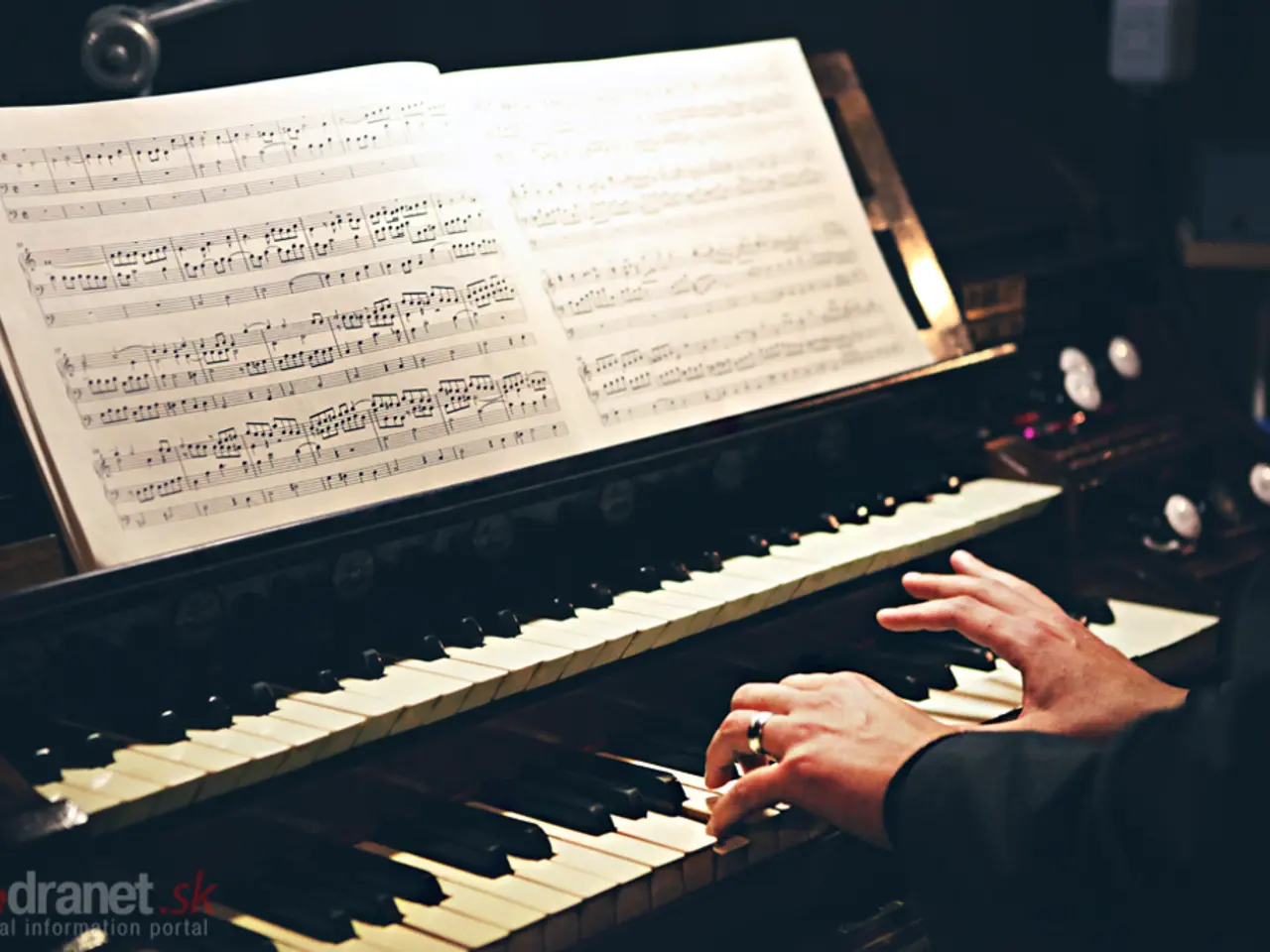Quick and Effective Piano Sight Reading Practice Methods for Aspiring Musicians
Sight reading, the ability to play a piece of music you've never seen before, is an essential skill for piano players. It not only saves time and makes learning new pieces easier, but it also makes playing the piano more fun and less frustrating.
Building a Strong Foundation
Mastering rhythm is the foundation of sight reading. Start by practicing exercises that focus on timing and beat accuracy before adding melody complexity. This will help you establish a solid foundation for reading and playing music.
Practical Techniques for Improvement
Fingering Techniques
Using fingering hacks to simplify navigating common patterns, black keys, five-finger positions, and tricky jumps can help maintain flow and reduce hesitation while sight-reading.
Personalized Exercises
Practicing customized exercises that adapt to your skill level and gradually increase in difficulty, including varied time signatures and melodic intervals, can help you improve your sight-reading skills.
Challenging Material
Playing progressively challenging sight-reading pieces, such as those provided by ABRSM or structured courses, can build your confidence and familiarity with different musical styles.
Digital Tools and Platforms
Utilizing digital tools and platforms that generate randomized sight-reading exercises and provide guided practice steps can help maintain engagement and track progress.
Rhythm Games and Flashcard Exercises
Incorporating rhythm games or flashcard exercises can internalize rhythmic patterns in an interactive and enjoyable way.
Key to Success
Patience and dedication are key to improving your sight-reading skills. Remember that this is a skill that improves with time and practice.
Breaking Down Complex Pieces
Dividing music into sections based on musical phrases or difficulty, working on each section slowly, and ensuring accuracy before increasing speed can help master complex pieces.
Continuous Challenges and Varied Material
To improve sight-reading abilities, continuously challenge yourself with new and varied material.
Historical Contexts and Music Theory
Understanding the historical and cultural context of the pieces played can enhance interpretation and add depth to sight-reading practice. Engaging in music theory exercises unrelated to instrument practice can reinforce theoretical understanding and its application to sight reading.
Daily Practice and Performance Scenarios
Allocating a specific part of the practice session for sight reading ensures consistent improvement over time. Practicing sight reading in a performance-like setting can help you learn to manage anxiety and improve your concentration and accuracy under stress.
Simulating performance scenarios during practice, such as playing in front of an audience or recording, can help improve sight-reading skills under pressure.
Balancing Practice and Enjoyment
Engaging in other musical activities like playing for fun, improvisation, and learning pieces by ear can contribute to overall musicality and keep practice enjoyable.
As your confidence and skills grow, gradually increase the difficulty of the pieces you practice with.
The Power of Music Theory
A solid understanding of music theory can significantly enhance your sight-reading skills. Researching composers and historical periods can provide insights into the intended style and execution of the music, beneficial for sight reading.
In conclusion, mastering sight reading requires regular practice, a clear method for tackling new music, and a combination of technical skill, gradual challenge, and regular practice. With patience, dedication, and the right approach, you can develop quicker, cleaner sight-reading ability and overall musicianship.
Music theory is essential for improving sight-reading skills, as a strong theoretical understanding can provide insights into the intended style and execution of the music.
Education-and-self-development resources such as piano lessons and structured courses can help players build their sight-reading abilities progressively.
Incorporating rhythm games or flashcard exercises can internalize rhythmic patterns in an interactive and enjoyable way.
To keep practice enjoyable and contribute to overall musicianship, engaging in other musical activities like playing for fun, improvisation, and learning pieces by ear can be beneficial.
As you develop your sight-reading skills, incorporating elements from entertainment like playing in front of an audience or recording can help you learn to manage anxiety and improve concentration and accuracy under pressure.




